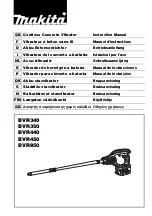
22
C
HAPTER
3: L
OGGING
IN
THROUGH
THE
C
ONSOLE
P
ORT
Configure
the Console
port
Set the
baud rate
speed
speed-value
Optional
The default baud rate of the AUX port
(also the Console port) is 9,600 bps.
Set the
check mode
parity
{
even
|
mark
|
none
|
odd
|
space
}
Optional
By default, the check mode of a
Console port is set to
none
, that is, no
check bit.
Set the stop
bits
stopbits
{
1
|
1.5
|
2
}
Optional
The default stop bits of a Console port
is 1.
Set the data
bits
databits
{
7
|
8 }
Optional
The default data bits of a Console port
is 8.
Configure the command
level available to users
logging into the user
interface
user privilege level
level
Optional
By default, commands of level 3 are
available to users logging into the AUX
user interface.
Make terminal services
available to the user
interface
shell
Optional
By default, terminal services are
available in all user interfaces.
Set the maximum number
of lines the screen can
contain
screen-length
screen-length
Optional
By default, the screen can contain up to
24 lines.
You can use the
screen-length
0
command to disable the function to
display information in pages.
Set history command
buffer size
history-command
max-size
value
Optional
The default history command buffer
size is 10. That is, a history command
buffer can store up to 10 commands by
default.
Set the timeout time for
the user interface
idle-timeout
minutes
[
seconds ]
Optional
The default timeout time of a user
interface is 10 minutes.
With the timeout time being 10
minutes, the connection to a user
interface is terminated if no operation is
performed in the user interface within
10 minutes.
You can use the
idle-timeout
0
command to disable the timeout
function.
Table 18
Console port login configuration with authentication mode being scheme
Operation
Command
Description
Summary of Contents for 3CR17660-91
Page 10: ...8 CONTENTS ...
Page 14: ...4 ABOUT THIS GUIDE ...
Page 46: ...32 CHAPTER 5 LOGGING IN THROUGH WEB BASED NETWORK MANAGEMENT SYSTEM ...
Page 48: ...34 CHAPTER 6 LOGGING IN THROUGH NMS ...
Page 60: ...46 CHAPTER 9 VLAN CONFIGURATION ...
Page 64: ...50 CHAPTER 10 MANAGEMENT VLAN CONFIGURATION ...
Page 80: ...66 CHAPTER 13 GVRP CONFIGURATION ...
Page 98: ...84 CHAPTER 15 LINK AGGREGATION CONFIGURATION ...
Page 112: ...98 CHAPTER 18 MAC ADDRESS TABLE MANAGEMENT ...
Page 126: ...112 CHAPTER 19 LOGGING IN THROUGH TELNET ...
Page 162: ...148 CHAPTER 20 MSTP CONFIGURATION ...
Page 274: ...260 CHAPTER 29 IGMP SNOOPING CONFIGURATION ...
Page 276: ...262 CHAPTER 30 ROUTING PORT JOIN TO MULTICAST GROUP CONFIGURATION ...
Page 298: ...284 CHAPTER 33 SNMP CONFIGURATION ...
Page 304: ...290 CHAPTER 34 RMON CONFIGURATION ...
Page 338: ...324 CHAPTER 36 SSH TERMINAL SERVICES ...
Page 356: ...342 CHAPTER 38 FTP AND TFTP CONFIGURATION ...
Page 365: ...Information Center Configuration Example 351 S4200G terminal logging ...
Page 366: ...352 CHAPTER 39 INFORMATION CENTER ...
Page 378: ...364 CHAPTER 40 BOOTROM AND HOST SOFTWARE LOADING ...
Page 384: ...370 CHAPTER 41 Basic System Configuration and Debugging ...
Page 388: ...374 CHAPTER 43 NETWORK CONNECTIVITY TEST ...
Page 406: ...392 CHAPTER 45 CONFIGURATION OF NEWLY ADDED CLUSTER FUNCTIONS ...
















































